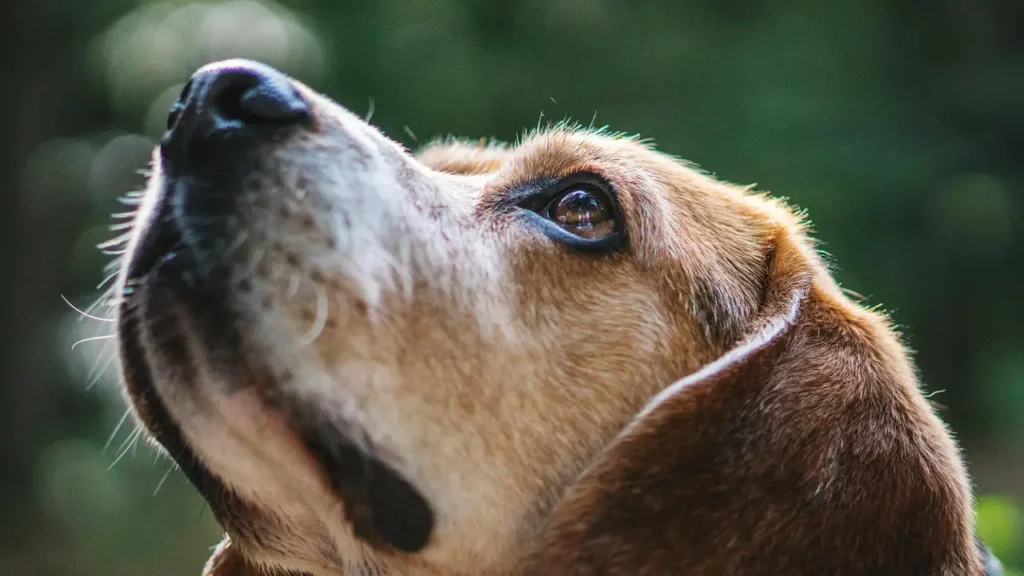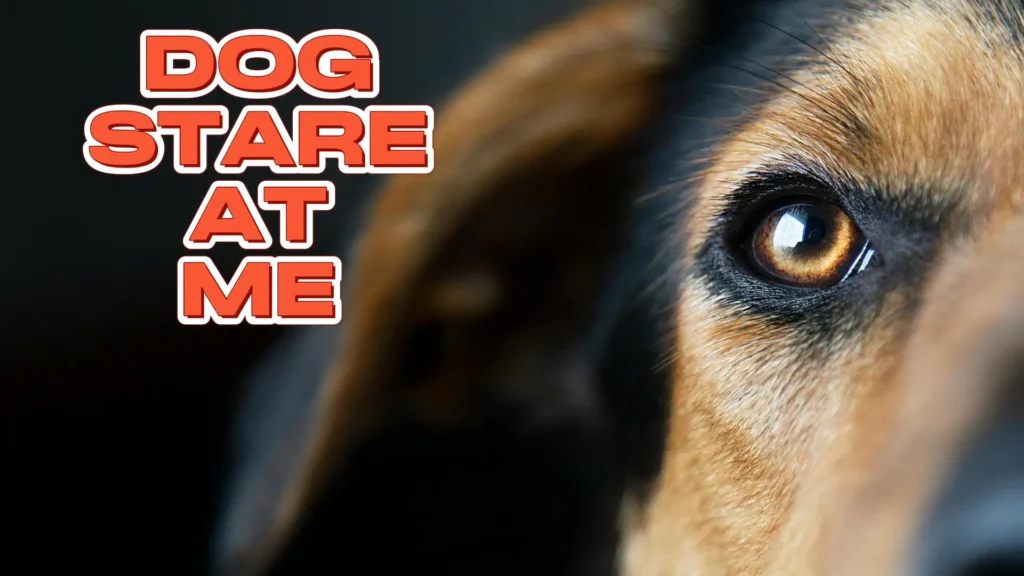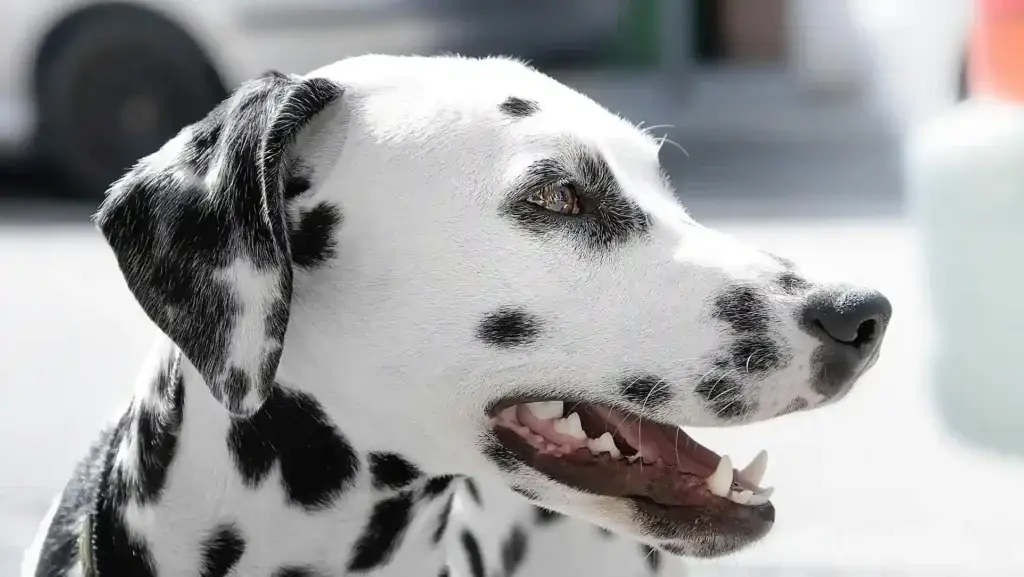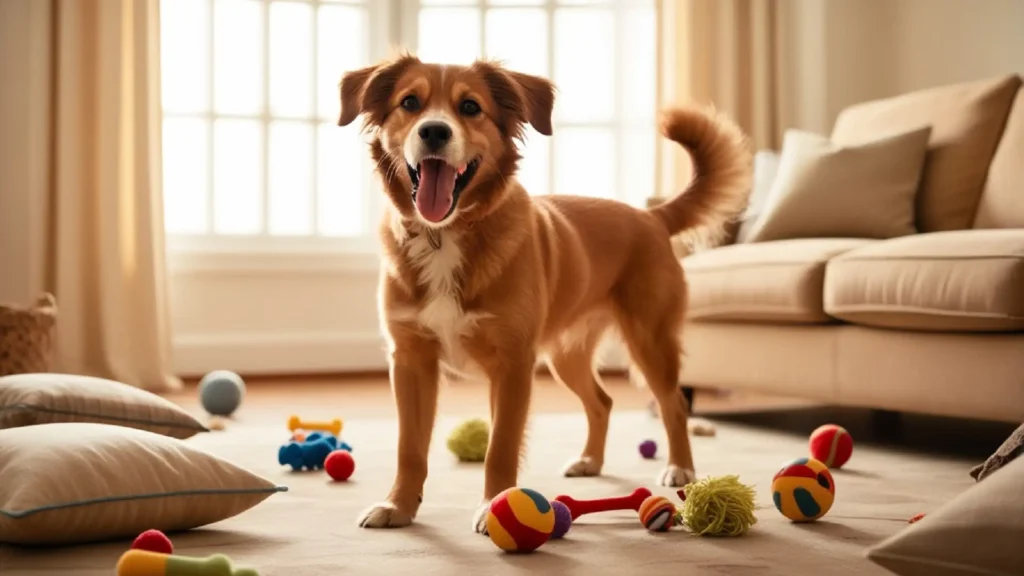Dogs have expressive eyes. As a pet owner, you’ve probably noticed your furry friend staring at you from time to time. There’s usually a reason behind this behavior. Understanding why your dog stares at you can strengthen the bond between you and provide insights into their emotional and physical needs.
Let’s explore the common reasons dogs engage in this behavior.
They’re Seeking Attention
The straightforward answer is they want something from you.
Dogs are social animals. They have learned to communicate their needs effectively with humans. Whether it’s food, a walk, or simply some cuddle time, dogs use eye contact as a way to convey their desires.
A study published in Biology Letter (2016) found that dogs are highly attuned to human facial expressions and gestures. The researchers discovered that dogs tend to follow their owner’s gaze. Dogs use prolonged eye contact as a strategy to elicit attention.
This behavior is not random. It’s a learned response that has been reinforced over time. For instance, if your dog stares at you while wagging their tail or nudging you with their nose, they might just be asking for a little extra love. These actions are subtle cues that indicate your dog is attempting to initiate interaction.
Dogs also understand that humans respond to certain behaviors more than others. If staring at you has previously resulted in getting what they wanted, they’ll continue to use this tactic.
It’s important to note that dogs don’t always stare out of selfish motives. Sometimes, they simply crave companionship.
Responding positively to your dog’s stare by engaging with them can reinforce this communication method. This makes your bond stronger over time.
However, it’s crucial to set boundaries. If your dog is staring excessively, ensure you’re not inadvertently rewarding unwanted behaviors. Instead, teach them alternative ways to ask for attention, like sitting calmly or bringing you a toy. This approach ensures that your relationship remains balanced and harmonious.
Anticipation of Food
Dog staring during mealtime is likely because they associate you with food. Dogs quickly learn routines. They can recognize cues like the sound of a can opener, the clinking of dishes, and the scent of cooking. Their unwavering gaze simply mean they’re hoping for a tasty morsel.
This behavior is rooted in survival instincts. Wild ancestors of modern dogs had to be vigilant about opportunities to eat. This trait has carried over into our pets today.
By widening their eyes and raising their eyebrows, dogs mimic expressions that humans find irresistibly endearing. This evolutionary adaptation makes it harder for us to ignore their requests.
While it’s natural to feel tempted to share your meal with your furry friend, it’s essential to remember that all human foods aren’t safe for dogs. Chocolate, grapes, onions, and certain spices can be toxic. They cause serious health issues. Additionally, feeding table scraps regularly can lead to obesity and poor nutrition. This can shorten your dog’s lifespan.
Strengthening the Human-Canine Bond Through Oxytocin
Believe it or not, mutual gazing between dogs and their owners releases oxytocin. It’s the so-called love hormone. A groundbreaking study published in Science (2015) showed that sustained eye contact between dogs and humans increases oxytocin levels.
This creates feelings of trust and affection. This unique connection is thought to have developed through thousands of years of domestication. During these times, dogs adapted to living alongside humans and forming deep emotional bonds.
When your dog stares at you lovingly, they might just be expressing their deep attachment to you. Unlike other animals, dogs have evolved to view humans as part of their social group. Eye contact plays a significant role in maintaining this relationship. It’s one of the many ways dogs show their loyalty and devotion.
This oxytocin-driven bond isn’t limited to positive interactions either. Studies suggest that even brief moments of eye contact can reduce stress and anxiety in both dogs and their owners. For example, after a long day at work, simply looking into your dog’s eyes can trigger a calming effect. This action helps both of you unwind and relax.
Observing Your Emotional State

Dogs are incredibly perceptive creatures. They are capable of reading human emotions through body language and facial expressions. If you seem upset, your dog may stare at you to assess the situation and offer comfort.
Many dog owners report that their pets become especially attentive when they’re feeling down. They then stay close by. This empathetic behavior highlights the depth of the human-canine bond.
Research published in Current Biology (2015) demonstrated that dogs can distinguish between happy and angry human faces. Using photographs and live interactions, the researchers found that dogs are not only able to recognize different emotional states but also adjust their behavior accordingly.
For example, if you appear sad, your dog might approach you slowly and softly. Conversely, if you’re excited, your dog may mirror your energy. Thy join in on the fun.
This ability to read emotions likely stems from their pack-oriented nature. In the wild, understanding the body language of their pack members would have been crucial for survival. Today, this skill translates into a heightened sensitivity to their human family’s emotional cues. This allows them to act as intuitive companions.
Confusion
Sometimes, a dog’s stare reflects confusion rather than affection. Dogs don’t always understand what we want from them. For instance, if you’ve given them a command they don’t understand, they look at you for guidance. This behavior is common in younger dogs. Puppies, in particular, are in the process of figuring out how to navigate the world around them. They rely heavily on their owners for cues.
Their stare serves as a silent question: “What do you want me to do?” This reliance on human guidance underscores the depth of the bond between dogs and their owners.
Dogs may also exhibit this behavior during training sessions. If a command isn’t clear or if there’s too much going on in the environment, your dog might pause and look at you for clarification. This moment of hesitation is not defiance; it’s simply their way of processing information and seeking further instruction.
Provide clear instructions and positive reinforcement. It helps build confidence in your dog. To minimize confusion, break down complex tasks into smaller, manageable steps. Use consistent verbal and physical cues.
Protectiveness
In some cases, your dog’s stare might indicate vigilance. Loyal dog breeds like German Shepherds, Rottweilers, and Doberman Pinschers are known for their strong protective instincts. These dogs monitor their surroundings for potential threats.
If your dog seems tense while staring, they might be keeping an eye out for danger. The body language of your dog will provide additional clues: ears perked up, tail stiff, and hackles raised all suggest heightened awareness.
This protective behavior stems from their ancestry as working and guard dogs. Historically, these breeds were bred to safeguard livestock, property, and people. Even in modern households, where threats are less frequent, their instinct to protect remains intact.
However, it’s important to differentiate between appropriate vigilance and overprotectiveness. A well-trained dog should be able to distinguish between real threats and harmless stimuli.
Without proper guidance, excessive alertness can lead to reactive behaviors like barking, growling, and aggression. Socialization plays a critical role in helping your dog develop a balanced temperament. Introduce them to various people, animals, and environments from an early age. This teaches them to remain calm in diverse situations.
Medical Concerns
Occasionally, excessive staring can signal an underlying health issue. While most instances of staring are harmless, obsessive gazing could indicate a medical problem. Conditions like cognitive dysfunction syndrome (CDS), which is similar to dementia in humans, can cause changes in behavior, including staring blankly at walls, floors, or people.
Vision problems, such as cataracts or retinal degeneration, may also lead to altered visual perception. These diseases prompt your dog to stare in an attempt to make sense of their surroundings.
Other symptoms can accompany excessive staring. Lethargy, disorientation, pacing, vocalizing at night, or difficulty recognizing familiar faces should raise red flags. Older dogs are especially prone to CDS, but younger dogs aren’t immune to neurological and sensory issues.
Similarly, pain or discomfort from conditions like arthritis and gastrointestinal distress might manifest as prolonged staring.
It’s worth noting that stress can also contribute to obsessive behaviors. For example, phobias related to loud noises may cause your dog to fixate on you for reassurance. However, if the staring persists regardless of external factors, it’s best to rule out any underlying medical causes.
Early diagnosis and treatment of medical conditions improve your dog’s quality of life. Regular veterinary check-ups are essential for catching potential issues before they escalate. If you notice sudden changes in your dog’s behavior, including excessive staring, schedule an appointment with your vet as soon as possible.
Your dog’s tendency to stare at you is rooted in biology, psychology, and the special bond you share. Their gaze is a testament to the incredible connection between humans and dogs. By paying attention to context and responding appropriately, you can deepen your relationship with your pet and address any concerns that arise.




